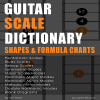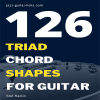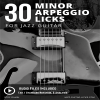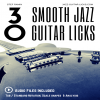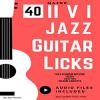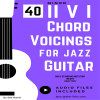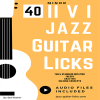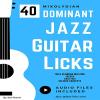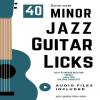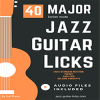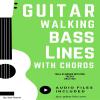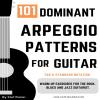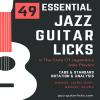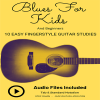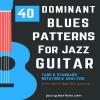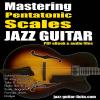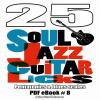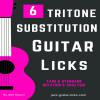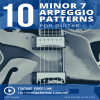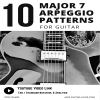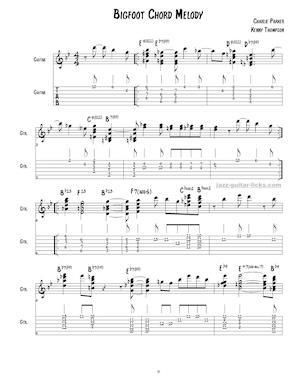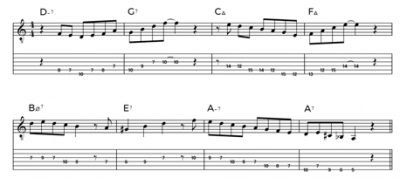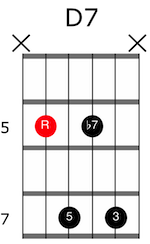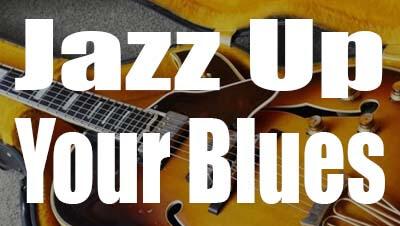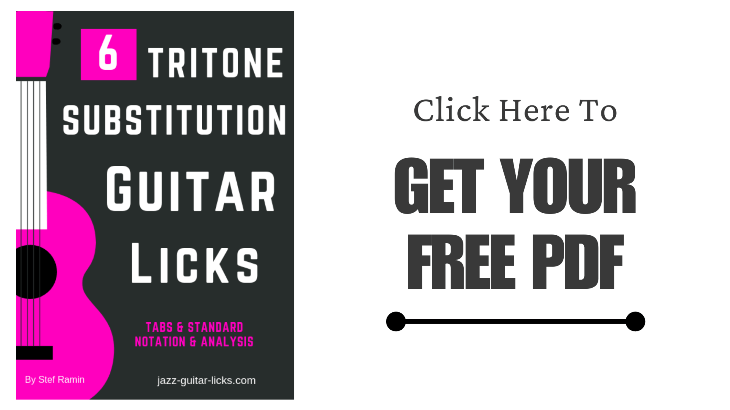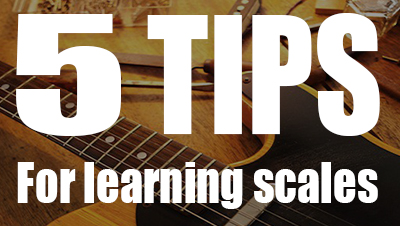
5 Tips For Learning Guitar Scales
- By jazz-guitar-licks
- On 2018-03-23
- In Guest Posts
- 0 comments
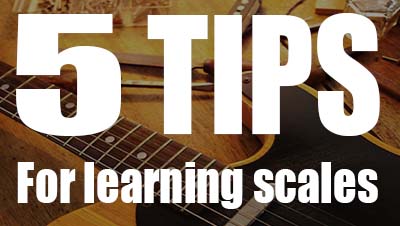 Learning to maneuver through scales on your guitar will bring about a ton of benefits to you, as a player. First of all, you'll begin to perceive music a little bit differently – you'll find logic where you ought to think there was none, you'll understand how your favorite composers got their brilliant ideas, and, most importantly, you'll get to put the theory into practice.
Learning to maneuver through scales on your guitar will bring about a ton of benefits to you, as a player. First of all, you'll begin to perceive music a little bit differently – you'll find logic where you ought to think there was none, you'll understand how your favorite composers got their brilliant ideas, and, most importantly, you'll get to put the theory into practice.
What's more, the whole journey of exploring the theoretical sphere of music concerning the scales isn't all that hard. Essentially, you'll found yourself amidst the crossroads, and you'll have to choose a path – you'll either delve deep into books about music theory, or you'll have to figure everything out yourself.
Regardless of the path you wish to take, mastering and learning guitar scales is, quite frankly, easy. We've brought together a short list of five tips that will make the process even simpler, and more entertaining.
Tip #1
Explore the fingerboard on your guitar in full extent
Before you can even begin learning a thing or two about guitar scales, you need to know what they're composed of. Namely, each scale represents a group of notes that are systematically categorized based on tonal qualities and compatibility.
There's a huge number of scales, and only a handful of people know each and every one, but you shouldn't rush it – all those notes and note groups are right in front of you. Your fingerboard (some people call it fretboard – it's basically a same thing) features "frets", and each fret yields a certain tone once the strings are pressed and plucked.
Getting familiar with frets, the notes they provide, and, in the end, your fingerboard, you'll have a clean overview of the entire note system that your guitar can provide. Now, knowing how each note sounds won't get you far, but you'll have where to start, to say the least.
Tip #2
Try out different note combinations and inquire about them with your fellow guitarists
During the process of familiarization with your fingerboard, you're bound to find certain "patterns". Even though they'll seem a bit random at start, these "patterns" are actually either fully compatible notes (in terms of tonality) or "disharmonies". Whichever the case, you'll have experienced playing a certain guitar scale this way.
Most beginner guitars (and certain veterans as well) tend to have a "note of preference", or so to speak. This regards the note they often begin while getting warmed up, the note with which they begin their creative process of writing songs, or simply jam to. Needless to say, this is the habit we all develop quite quickly, but we advise you to bypass it, if you could.
Begin playing from a random starting point, and try to forget what you normally do – whenever you jam, you tend to stick with what you know, and that is, more often than not, the situation where you use notes from a single scale (sometimes two, but rarely).
Try different combinations, arrange your fingers in unfamiliar positions, and talk to your friends who're also playing the guitar. The results might not always be to your liking, or the sounds might not appear too appealing, but exploring the unknown is what will bring you ever closer to understanding why guitar scales are important, and why they're even developed.
Tip #3
Consider taking private classes, notifying your teacher that you want to understand what guitar scales are
If you're struggling with understanding the guitar scales on your own, you should consider asking for professional help – taking private classes. Every guitar teacher that's worth his salt has forged his (or hers) prowess with theory, and scales are but a part of it.
Most teachers will ask you if you have any knowledge of music theory whatsoever, so as to determine the starting point and their approach to improving your skills. If you're not feeling too patient, you could always point out that that you wish to learn everything possible about guitar scales exclusively, but know that the scales are but a part of a much larger whole.
This might not be the fastest way to learn them, and it's definitely the most economical way, but it's the safest route you could take. In most cases, you'll be handed music books and material that will provide sufficient information, regarding how each scale is called, how it's played, and the many variations they come in.
Tip #4
Watch "how to" and "tutorial" videos online
If you're not feeling exceptionally generous, you should consider searching for help online. There are plenty of tutorial videos on YouTube where various musicians, theoreticians, and others share their knowledge of music theory.
The only problem is that this approach is quite "passive". The only way you'll get any kind of interaction is by posting comments, and there's no guarantee you'll receive an answer. On the other hand, there's a plethora of videos, and if the first ones you come across are not to your liking, just go to the next one.
This method might require some patience, trial, and error, but it's the most economical solution, and you'll learn quite a lot of stuff along the way.
Tip #5
Be patient and practice consistently
The only fail-proof way to learn guitar scales is with constant, consistent practice. Given enough time, you'll come to get bored of the things you usually do, and your inquisitive side will get the best of you, urging you to try out something new.
Playing "new" chords, riffs, licks, and lines will lead you to discovering new guitar scales, whether you like it or not. In the end, you'll get to understand and learn most of them, but you'll have to get over a certain flaw as well – you can't possibly learn how each scale is called by practicing alone.
Conclusion
Once you've grasped the theory behind guitar scales, playing them will come naturally. In essence, it's up to you to decide "how" are you going to learn them, as there are many ways and methods to acquire knowledge and the skill required to do so. Anyway, we wish you good luck, and we hope that these tips were of any help to you!
Author bio
I’m Anh Vu, founder of headphonesunder100center.com . Visit to find all information about headphones that you need.
-
Guitar Chord Dictionary
This PDF eBook provides over 550 guitar chord shapes. This is the perfect reference guide to understand how chords are built and how to play them on the guitar neck. -
Guitar Scale Dictionary
This E-book is a printable PDF method including over 700 scale diagrams and formula charts for guitarists. -
Harmonized Scales For Guitar
Complete guitar PDF on harmonized scales: major, minor, harmonic and melodic. Includes chord and arpeggio diagrams, charts and practical tabs. -
172 Arpeggio Shapes For Guitar
This printable PDF is a method dedicated to guitarists of all styles who want to learn build and play the most important types of arpeggios. -
126 Triad Chord Shapes
This handbook for guitar players is intended both for teachers and students. It includes 126 guitar shapes for mastering triads. -
Harmonic Major Scale Chords
this PDF offers diagrams and tabs for guitar to learn the chords of the harmonic major scale. -
Major Scale Harmonization
This package provides a printable PDF with exercises and audio files to learn how to harmonize the major scale with 3 note chords and their extensions. -
30 Minor Arpeggio Licks
This package includes a printable PDF method containing 30 exercises with tabs, staves and audio files for practicing minor arpeggios on guitar. -
II V I Bundle - 170 Exercises
This bundle contains 4 PDF methods for a total of 170 exercises with tabs, staves, analysis & audio files for practicing scales, arpeggios licks & chords over the 2-5-1 progression. -
Diatonic Licks Bundle
This package contains 120 jazz guitar lines based on diatonic modes as Mixolydian, Dorian and Ionian. PDF format with tabs, audio files and analysis. -
30 Groovy Jazz Guitar Licks
This downloadable package contains a PDF WITH audio files giving access to 30 groovy guitar phrases mixing jazz, blues and funky licks for beginners. -
30 Smooth Jazz Guitar Licks
In this package you'll get a printable PDF Method with tabs, notation, analysis, scale shapes and audio files for practicing 30 smooth jazz guitar licks. -
40 II V I Jazz Guitar Licks
This pdf method for guitar contains fourteen 2 5 1 jazz guitar lines with tab, standard notation, analysis, scale charts and audio files. -
50 II-V-I voicings
This printable PDF guitar method provides 50 exercises with audio files, analysis, tab and staves for learning major 2-5-1 chord voicings. -
40 Minor 2 5 1 Chord Voicings
This PDF method contains 40 exercices with tabs, scores and audio files for practicing jazz guitar chords over the minor 2 5 1 progression. -
40 Minor II V I Licks
This guitar method is a printable PDF with tabs, diagrams, theory and audio files providing 40 minor 2 5 1 jazz patterns. -
40 Mixolydian Jazz Guitar Lick
PDF guitar method with tabs, audio files and theory providing 40 dominant jazz guitar lines for teachers and students. -
40 Minor Jazz Guitar Licks
This printable guitar method in PDF format contains 40 easy minor jazz guitar lines based on the Dorian mode. -
40 Major Jazz Guitar Licks
Printable PDF eBook method containing 40 major jazz guitar licks with tab, standard notation and audio files for beginners and intermediates. -
Guitar Walking Bass Lines
This jazz guitar method about walking bass lines and chords is available as a PDF files containing 35 exercises with tabs, analysis and audio files -
101 Dominant Arpeggio Patterns
This printable PDF method provides 101 dominant arpeggio exercises with tab, theory and standard notation for the jazz, blues and rock guitarist. -
49 Essential Jazz Lines
This printable eBook method in PDF format provides 49 jazz solo transcriptions of the greatest jazz musicians. Tab, standard notation, audio files & analysis. -
11 Jazz Blues Studies
11 jazz blues chord studies with tabs, standard notation, analysis, and audio recordings and PDF. -
10 Easy Fingerstyle Blues
This PDF with Tabs and audio files provides 10 easy acoustic fingerstyle blues guitar studies for kids and beginners. -
25 Altered Jazz Guitar Lines
This PDF eBook method contains 25 altered jazz guitar licks with tabs, patterns, scale charts and audio files to master, apply and develop the altered scale. -
40 Blues Dominant Patterns
This printable method is available as a PDF file containing 40 easy dominant jazz-blues guitar lines with tabs, standard notation, analysis, audio files and scale charts. -
25 Pentatonic Licks
This jazz guitar method is an eBook available as a PDF with standard notation, guitar tabs, diagrams, analysis, audio files and backing tracks. You will find in this booklet 25 easy jazz guitar lines with theory using common and rare pentatonic scales. -
25 Soul Jazz Guitar Licks
You will find here an eBook available in PDF containing 25 soul jazz and hard bop guitar licks in the style of Grant Green, Melvin Sparks, George Benson. -
25 Diminished Patterns
This eBook PDF with audio files contains 25 dominant diminished jazz guitar patterns using the half-whole diminished scale and diminished 7th arpeggios. -
6 Tritone substitution licks
This Printable PDF eBook available for free download contains 6 easy jazz guitar licks with tabs/notation, youtube video link and analysis about the tritone substitution. -
10 Minor 7 Arpeggio Patterns
This printable PDF eBook offers 10 easy minor 7 arpeggio patterns with its related YouTube video for beginner guitarists. -
10 Easy Major 7 Arpeggio Licks
This is a printable PDF for beginner jazz guitar players providing 10 easy licks to practice major 7 arpeggios. -
10 Chord Melody Lines
Within this package, you'll discover a set of ten chord melody exercises for beginners. Printable PDFaudio files, a backing track, and a link to the associated YouTube video. -
10 Minor Blues Scale Licks
You'll find here a PDF with 10 easy jazz guitar licks to practice the minor blues scale on guitar.
Add a comment

